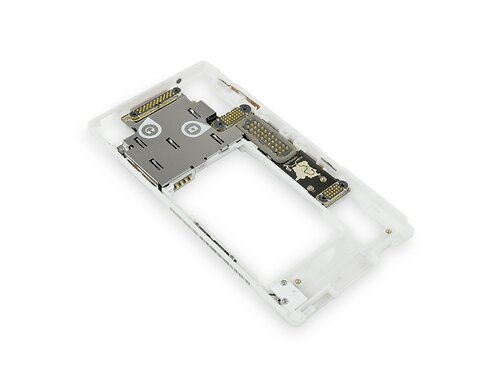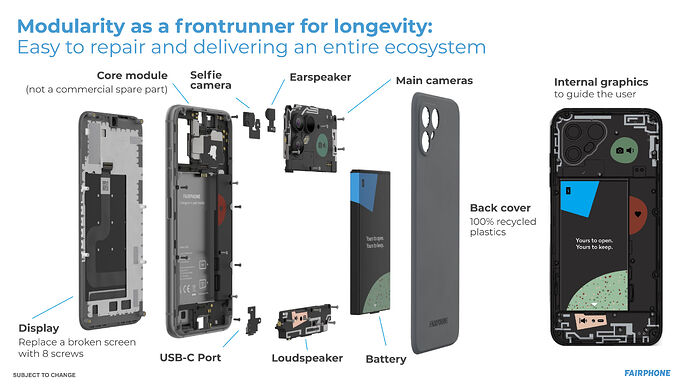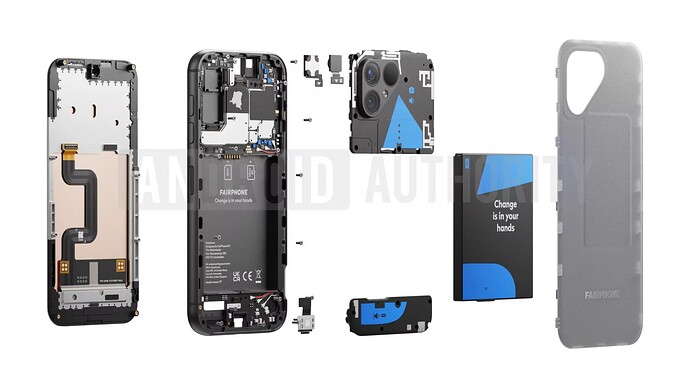Hey @Vange
I can totally understand your frustration. The same happend to the motherboard of my FP3 two weeks ago.
I already had an Idea why this happened (which I will elaborate on below) and tried to reflow the motherboard as explained here for the FP2 and tadaaa - after I put the motherboard in my oven at approx. 200°C for 10-15 min. it worked again ![]()
But here comes the sad part of the story: A week later my beloved FP3 fell out of my pocket from ~10cm to the ground, and was dead again. So I reflowed the core module again, but this time without success. ![]()
I will try it once again but I do not have much hope left. I think that maybe my oven was not warm enough the first time as the soldering tin I did into the oven next to the board didn’t really melted.
Instead of throwing the core module away, you could think about this method, but read the linked post carefully first!
But here comes the point what I think the reason for those failiures could be:
If we compare the FP2, FP3, FP4 and FP5, we can see some huge constructional changes over the generations:
-
With the FP2, you were able to open the phoneand change the display without removing any screw. Something that sounds amazing at the beginning, but it had huge drawbacks: You were able to bend the FP2 very good, as there is no stable let alone a metallic frame that would stabilize the device.
Thus, all the components were subjected to strong bending. And that caused huge issues, one of those were those dead motherboards. -
With the FP3 Fairphone fairly improved the quality of the overall shape stability of the phone. The frame was much stronger, the phone is hold together with screws and not only with some plastic slider as with the FP2.
But still: The frame consists of plastic and thus is still more form flexible as other metallic phones. -
With the FP4, the whole design changed again and - finally - the phone got a much more stable metallic frame. With this design, bending the phone is much harder.
But one thing that still bothered me after reading all those motherboard failiures: All motherboards from FP2 to FP4 were extended from the top edge of the smartphone the bottom edge. This inherently causes more mechanical stress to the core module since even the FP4 is flexible to some extend. -
With the FP5, Fairphone decided to place the whole motherboard only in the top part of the phone instead of streaching from the top to the bottom.
I suppose this will improve the lifespan of the core module since twisting should no longer be an issue.
Here some pictures to illustrate the huge differences:
-
FP2:
There was no stabilizing Frame around the phone and some parts of the core module were very small, which exposed the core module to a lot of mechanical stress and caused a lot of different issues:
-
FP3:
The frame of this phone stabilzed the the phone at least more than its predecessor. But the motherboard was still streched all over the whole length of the phone:
-
FP4:
While the motherboard is still streched over the whole length of the phone and has some very small areas, the metallic frame improves the from stability a lot:
-
FP5:
As you can see, Fairphone positioned the core module only in the top area without streching a it on one side to the bottom part. Instead, there’s a second part of the core module on the bottom, connected only by a flat cable on the display side.
TL;DR:
I don’t think you can really extrapolate from the bad experiences with the FP3 to newer models, since the whole design has changed a lot that should improve the overall life of the phone.
And yes, the core module is not cheap and I would gladly buy it direct from Fairphone to fix my broken FP3.
But since the main components like the SoC (CPU, modem, GPU,…), RAM, storage and other important parts are located there, it is reasonable that this is the most expensive part of the phone.



